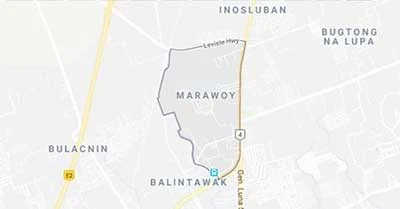Two Makapilis and the Marauoy, Lipa Massacre by Japanese Soldiers in February 1945
The date 11 February 1945 was among the darkest in the history of the then town of Lipa in Batangas. “Almost an entire community” was massacred by Japanese soldiers in the barrio of Marauoy1 just north of the town’s poblacion or center. Worse, these same soldiers were led to the homes of the barrio’s inhabitants by Filipino Makapilis.
The term Makapili was a shortened version of the name of an organization established in 1944 called the “Makabayang Katipunan ng mga Pilipino” (Patriotic Association of Filipinos). Its purpose for existence was to give military aid to and collaborate with the Japanese Imperial Army2. The term “makapili” was also used loosely to refer to members of the organization and other collaborators.
From two Supreme Court decisions against two such members of the organization, we are able to piece together what happened in Marauoy that fateful day in February 1945. These decisions were on cases of treason filed against one Florentino Canibas3 and one Macario Bautro4.
Canibas was a native of Tarlac who arrived in Batangas via Lopez in present-day Quezon Province. Soon after he arrived, Canibas with one Nicolas Gonzales started to recruit members in Lipa to form a Makapili unit. Gonzales would become the unit’s titular head while Canibas would function as its Secretary.
The Supreme Court document failed to give personal details about Bautro, the defendant in the other treason case.
In the morning of 11 February, Canibas, Bautro and presumably other members of the Makapili organization led Japanese troops on a house-to-house raid of Barrio Marauoy. The Canibas document stated that “almost the entire population of the barrio” was rounded up, including men, women and children.
 |
| Filipino collaborators working for the Japanese in World War II were known as "Makapili." Image loaded directly from FilipiKnow. |
The Canibas and Bautro documents diverged on the exact number of barrio inhabitants apprehended, the first saying 300 while the second said 200. The number, it has to be said, was immaterial in view of the inhumane atrocities that were to be committed by the Japanese.
The barrio folks were tied up in twos and led to the “citrus experimental station.” Presumably, this station was the site of the present day Southern Tagalog Integrated Agricultural Research Center, which is walking distance from the present-day Lipa City Hall. The station was established in 1930.
At the experimental station, the men and women were bayoneted one after the other and then thrown into an excavation. Children “were tossed up in the air and caught with the points of bayonets as they fell.” While it was established in the trials of both Canibas and Bautro that both tied up the barrio folks in Marauoy, only the latter actually participated in the killing of these people.
This gruesome event went on from about eight o’clock in the morning until about noon. Some witnesses testified that some of the barrio people were killed outside the station. Others said that there were also those who were killed inside the building.
Of those who were herded like cattle to be slaughtered at the experimental station, only five young girls were spared, supposedly “selected for their good looks by the accused (Canibas) and his fellow Makapilis.” One of these was a 15-year old by the name of Lutgarda Tolentino and another girl named Marcelina Tesico.
Both were taken to a Barrio Suloc (alternatively spelled Sulok or Sulac/Sulak in US Army documents) in Santo Tomas5. There, the girls were forced to become servants of the same Nicolas Gonzales who was the titular head of the Makapili unit in Batangas.
Both girls would be used by the prosecution as witnesses in the cases against both Canibas and Bautro. According to their testimonies, Canibas “wore Japanese uniform and white arm band, was armed with a revolver, mounted guard and did sentry duty, accompanied Japanese soldiers in raids against supposed guerrillas, confiscated foodstuff and forced male citizens to work for the Japanese army.”
Meanwhile, Bautro was described as having been seen “wearing a Japanese military uniform, carrying a firearm and training Makapili soldiers.”
The girls’ testimonies helped to convince the Justices of the Supreme Court that both Canibas and Bautro were guilty of treason as charged. In the case of Canibas, the court upheld the lower courts’ conviction and penalty as charged. In 1950, when the Supreme Court passed judgement on the case, the penalty was likely reclusion perpetua (permanent imprisonment5) to death as well as an accompanying fine6.
Meanwhile, in its 1952 judgement, the Supreme Court even raised the penalty given to the Bautro by the trial court to reclusion perpetua. The unspecified penalty given by the lower court took into consideration the mitigating circumstance of the defendant’s “lack of education.” The Supreme Court ruled, however, that this was “offset by the seriousness of the acts of the accused in taking part in the massacre of a great number of victims, he himself personally killing some of them.”
2 “Makapili,” Wikipedia.
3 “The People of the Philippines v Florentino Canibas,” online at Club Juris.
4 “The People of the Philippines v Macario Bautro,” online at The LawPhil Project.
5 Old folks in Lipa supposed used to say that Sulok, corner in English, was at the common border shared by Santo Tomas and Lipa. However, there is a barrio named Sulpoc in Tanauan which “The History and Cultural Life of the Barrio of Sulpoc” said used to be called Suloc and Pinagbahayan.
5 “Reclusion perpetua,” Wikipedia.
6 “Revised Penal Code of the Philippines,” online at the Chan Robles Virtual Law Library.

